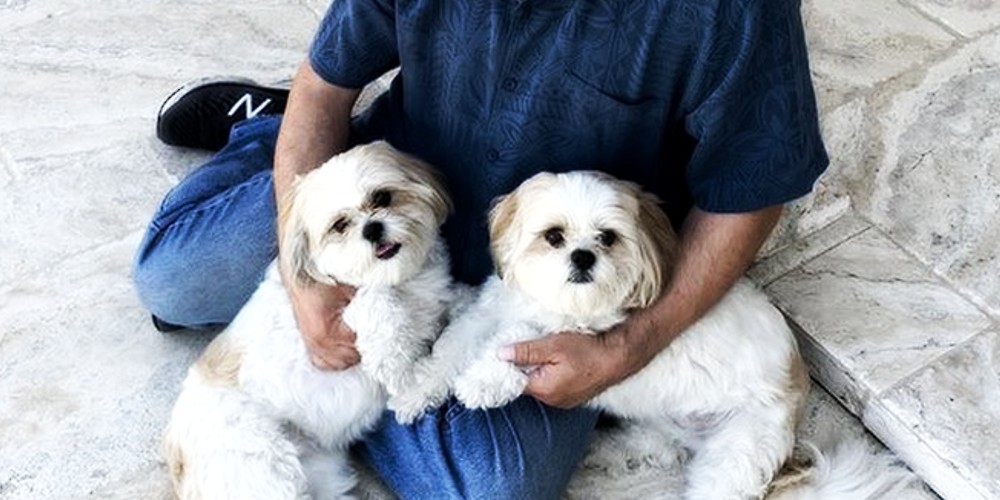”Jack” wasn’t just any house cat but Tammy’s best friend for almost two decades.
He was her rock and emotional lifeline when her parents and brother died six years apart—beside her in times of trouble when life was too much to carry alone.
“When you get ‘the one’—some people never do—they just don’t understand it,” said Tammy, a retired health care worker in Scottsdale, Arizona.
“Jack was one in a jillion. He was just a perfect gentleman. Neat as a pin.”
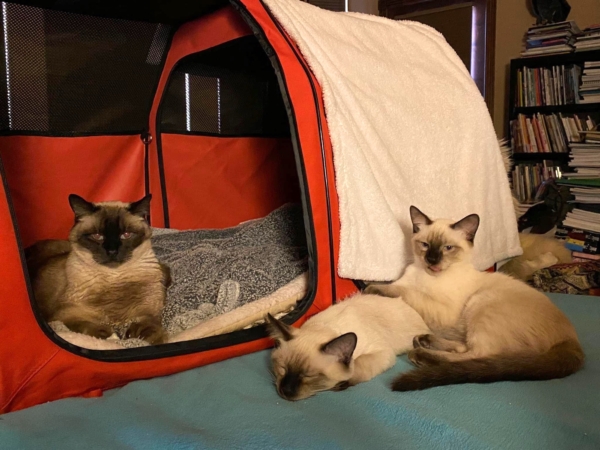
Jack lived to be 18—a long life, by cat standards—succumbing to cancer in February and dying in Tammy’s arms at home.
But before Jack’s cancer diagnosis, Tammy had already decided to “clone” her beloved cat, despite the high cost and uncertainty of the procedure.
“A lot of people do cloning for themselves,” Tammy said. “I know this sounds silly—I did it for Jack,” who she had neutered when he was young. “He deserved sons.”
The cloning procedure took place two years ago for $25,000 and produced two nearly-identical male kittens, each the spitting likeness of Jack.
Both kittens were born to their surrogate mother on Feb. 14, 2021—Valentine’s Day; both have extra toes on each paw and the same distinctive coloration that Jack had. And both love to swim, travel, and carry socks in their mouth, just like Jack.
Tammy named her two cloned kittens, OJ and Thud, who owe their existence to advancements in cloning technology over the past three decades.
Costly and Still Controversial
Tammy said she knew the procedure was not only expensive but controversial. She’s received many messages on Facebook condemning her decision to clone Jack as “Satanic,” “unnatural,” and unwise for her to play God. And these people were “ungodly rude” about it, Tammy said. For this reason, she asked not to use her last name in this story.
However, she said that most people on social media tell her they’re curious about cloning and think it’s “amazing.”
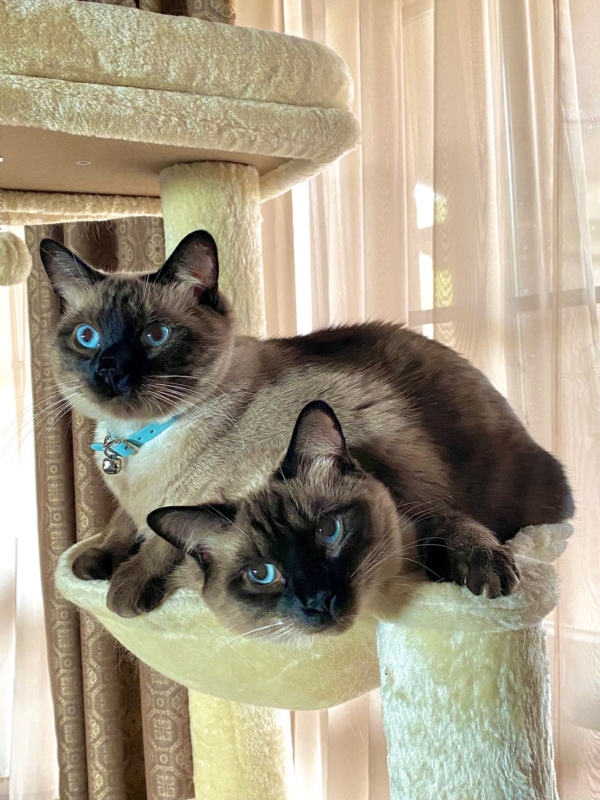
Pet cloning is making a genetic copy of a living or deceased pet, usually a dog or cat. It involves extracting DNA from the host animal to produce live embryos for placement inside a surrogate mother to develop until they are born.
According to market analyst DataIntelo, pet cloning is a global market projected to grow by 9.1 percent annually between 2022 and 2030.
- Preserve your retirement with physical precious metals. Receive your free gold guide from Genesis Precious Metals to learn how.
“The market can be attributed to the increasing demand for pet cloning services, rising awareness about the benefits of pet cloning, and technological advancements in the field of pet cloning,” the company website states.
The market goes by two types—deceased pet cloning and alive pet cloning using similar techniques. Since the controversial birth of Dolly, the first cloned sheep in 1996, several companies have emerged to reap the lucrative commercial rewards of pet cloning.
BioVenic and Gemini Genetics in the United States and Sinogene in China are among them. Pet cloning is also big business in South Korea, fetching $100,000 for a cloned dog at some elite clinics. For the past 20 years, ViaGen Pets and Equine in Texas has cloned horses, livestock, and dogs and cats for hundreds of clients across the United States.
“I think most clients hope to recreate that special bond [with a deceased pet]—and I certainly understand that,” said ViaGen’s client service manager Melain Rodriguez, who’s had many cats and dogs in her lifetime.
“Although you love them all, you had a special relationship with that one special [pet] that stands out. It’s so hard when it’s gone,” Ms. Rodriguez said.
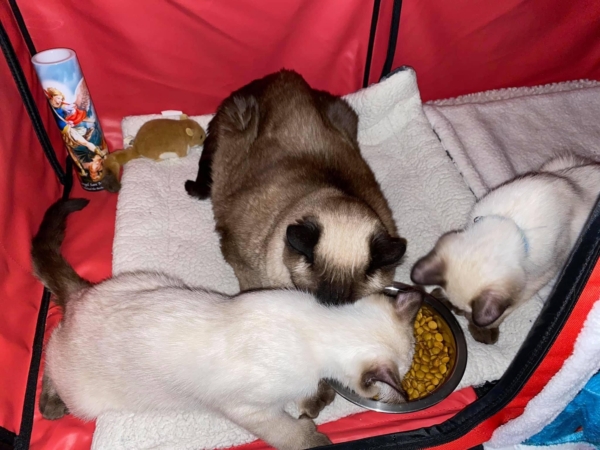
In 2016, ViaGen delivered the first cloned puppy in the United States: a Jack Russell terrier named Nubia, an identical twin of its genetic donor. Ms. Rodriguez said ViaGen cloned horses and livestock primarily before branching into cloning pets and even threatened or endangered species.
The procedure is intricate and costly—$50,000 for a cloned dog at ViaGen—and carries the potential risk of failed embryos and unwanted heritable traits. Several nationwide polls found that most Americans in sample groups opposed cloning on moral or religious grounds.
Opponents of animal cloning cite inherent health and safety risks, flaws in the developing technology, and lack of government oversight and regulation. The American Society for the Prevention of Cruelty to Animals (ASPCA) has called for a moratorium on cloned and bioengineered pets.
During the moratorium, a multidisciplinary commission would evaluate existing cloning research and technology, including regulations regarding its use.
“Our current knowledge of animal cloning indicates that there are important welfare concerns at issue,” according to the ASPCA position statement. “Reports on the health and condition of mammalian animals produced by cloning have indicated a variety of anatomical and physiological problems.
“It is difficult to document fully the consequences of cloning or bioengineered applications of companion animals since many of these activities fall outside the framework of publicly funded and regulated research programs.”
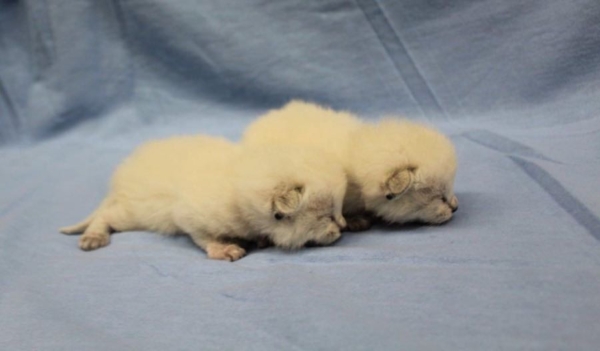
The U.S. Conference of Catholic Bishops (USCCB) opposes cloning on moral grounds, stating on its website that over 90 percent of cloned embryos miscarry or are stillborn.
“Dolly, the cloned sheep, was the sole survivor of 277 attempts. Those few who survive have serious medical problems.”
Many scientists oppose reproductive cloning of humans for these reasons “but still favor cloning for research,” the USCCB added. The American Anti-Vivisection Society (AAVS) said it opposes animal cloning as a potential threat to animal welfare. The organization launched two campaigns to stop animal and pet cloning to “protect both animals and people from being exploited by companies attempting to ‘bring back a deceased companion animal.’”
EU Opposition to Cloning
Opposition to animal cloning is also widespread in the European Union. In 2008 and 2010 surveys, the European Consumer Organization found overwhelming opposition to cloning in European countries.
More than 80 percent had concerns over cloning’s long-term effects on nature; 58 percent found cloning “totally unacceptable for food production” in 2008, 67 percent in 2010, and 69 percent felt cloning would risk viewing animals as commodities.
In addition, 83 percent said they would want food labeling on products derived from the offspring of cloned animals in European supermarkets. The organization said that commercial livestock cloning, including beef and dairy cattle, occurs mainly in the United States, Canada, and Argentina, with “some activity” in New Zealand, Australia, and China.
“In short, only the U.S. and Argentina have done much cloning of food animals,” Jaydee Hanson, policy director for the Center for Food Safety based in the United States, told The Epoch Times.
“Most other countries treat clones as a new animal requiring extensive review. Europe and Canada do that. Japan has limited approvals of clones for food and requires labeling, which prevents most markets from carrying meat from clones or their offspring,” Mr. Hanson said.
Mr. Hanson said the genetically engineered Gal Safe pig is the only cloned and FDA-approved meat product sold in U.S. supermarkets. But you can’t just “go to the supermarket and tell you’re getting the offspring of a cloned animal.”
“What you’re seeing in the food sector is a decline in the practice,” he said. “The animal clones are dogs, cats, and horses,” and a few other species.
Large Offspring Syndrome
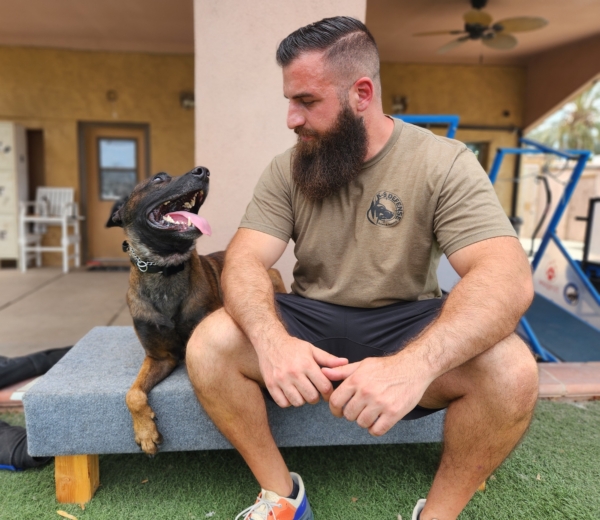
The center believes animal cloning is “generally not safe” absent long-term FDA studies, Mr. Hanson said.
“We know there are animal welfare implications: large offspring syndrome is a huge problem with cloned animals. The fetuses are large, and it kills them. It also happens in traditional breeding. It just happens more often with cloned animals. The thing about pets is people have such a love for their animals. That’s understandable.”
As a relatively new commercial industry, pet cloning fills a growing niche market, but there “aren’t that many people that can pay $50,000 to have a Xerox copy of their cat or dog,” Mr. Hanson said.
Jack, part Siamese, had dazzling blue eyes, a thick brown-black coat smooth as velvet, and an extra toe on each paw due to a congenital deformity called polydactylism.
Unlike most domestic short hairs, Jack loved the water, swimming in the pool with his owner Tammy, going on long car or motorcycle rides, and walking on a leash in public. Tammy said she desired to preserve these endearing traits in Jack through cloned offspring.
During a routine tooth cleaning at the vet clinic in 2015, Tammy had skin cells removed from his stomach and stored at ViaGen Pets. In 2021, she decided to proceed with the cloning procedure. About nine weeks later, she received two genetically cloned kittens for the price of one.
“I burst into tears when I saw them on the little carrier,” Tammy told The Epoch Times. “When they turned to look at me, I lost it. They were identical. The big paws, the bright blue eyes—identical to Jack. Perfect.”
“There’s nothing I can say other than amazing.”
Cloning and Public Perception
Ms. Rodriguez said that the media and Hollywood perpetuate the belief that cloning is dangerous and evil.
The 1992 movie “Jurassic Park” capitalized on the public’s fear of the unknown using a fictional island populated by cloned dinosaurs brought back from extinction. The dinosaurs ran amok through corporate sabotage, causing mayhem and destruction when the system broke down.
“A lot of the negative thoughts about cloning have come from Hollywood,” Ms. Rodriguez said. “They think that’s what it’s like. Most people who don’t fully understand the process are the ones who tend to be the most fearful of it.”
Animal cloning—whether it involves a horse, cattle, sheep, dog, cat, or ferret—is different from normal sexual reproduction. At ViaGen, the process begins with harvesting cells from a donor animal using a skin biopsy kit and sending it to ViaGen’s facilities for storage.
It will remain in stasis for weeks, months, years, and even decades in liquid nitrogen until the client is ready to clone their pet. About 85 percent of ViaGen’s business are long-term storage clients, who store their pet’s donor cells at a yearly $150 cost, Ms. Rodriguez said.
The next step in cloning involves growing millions of cells in a lab environment. Using a high-tech microscope and the “somatic cell nuclear transfer process,” the lab technician injects a single cell into a donor egg with the nucleus removed. A jolt of electricity causes the cell to divide and grow as a living embryo.
Multiple eggs are inserted into the surrogate mother and allowed to gestate until at least one cloned kitten or puppy is born—sometimes more than one. In most cases, the offspring are healthy and robust genetic copies of the original donor, Ms. Rodriguez told The Epoch Times.
“We do see, for the most part, that cloned animals live a normal lifespan and are just as healthy as the original animal”—with a few caveats, she said.
She said it’s essential for clients to have reasonable expectations about pet cloning. For example, a cloned pet is not the same as the one that passed. Given the likelihood of slight genetic variations, there might be differences in coloring, behavior, and temperament.
If a host dog or cat died from an inherited illness, that illness may carry over to the cloned offspring.
“Anything that is genetically linked, as far as illness, the clone will have the same genetics and the same potential to develop that illness at some point in its life,” Ms. Rodriguez said.
Environment plays a significant role in how a cloned pet acts and reacts. And sometimes, it’s the pet owner who’s different. While time often heals the emotional wound of losing a pet, people change with time, Ms. Rodriguez said.
They may feel and behave differently while interacting with a genetic copy of a beloved pet that died years ago, which may influence the pet’s personality. Yet, she said there is no limit to how many times one can clone a pet to resurrect that priceless bond.
“It’s a very personal decision and not for everyone. It’s the next best thing to going to the breeder and getting another dog with the same parents.”
Ms. Rodriguez acknowledged critics who feel that cloning pets is “unnatural” and even immoral, despite the process being similar to in vitro fertilization (IVF) in family planning common today.
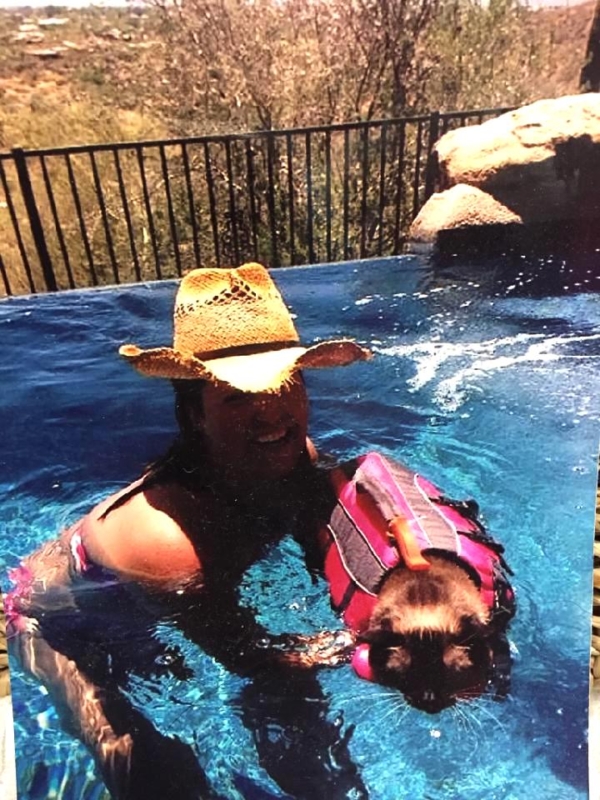
The technology shows even more promise in “conservation cloning” threatened or endangered species.
Survival Beef on sale now. Freeze dried Ribeye, NY Strip, and Premium beef cubes. Promo code “jdr” at checkout for 25% off! Prepper All-Naturals
Using cloning tools and technology, ViaGen recently decided to bring the first clones of the endangered black-footed ferret and Przewalski’s horse into the world.
“Where I see cloning technology headed is helping support endangered species,” Ms. Rodriguez said.
Paying to Keep Emotional Bond Alive
Ms. Rodriguez said the main reason for cloning a pet is the desire to recreate the “family” bond that existed with a deceased dog or cat.
It is one way to approach enduring the grief that comes with death. For many pet owners, the cost is often no object.
“I think it’s that special relationship—that special bond they had with their pet. We commonly hear that they had many dogs but nothing like this dog, and they can’t imagine life without this dog.”
Before cloning became an option, Tammy said that Jack was her pride and delight, an abandoned stray cat “somebody threw out because he had extra toes.”
“He was utterly stunning in every way,” Tammy said, and cloning seemed the best and only option to continue his genetic legacy.
Jack spent two years bonding with his cloned “sons” before he passed.
“He smelled them face to face” when they first met in 2021 and “immediately started grooming them. He accepted them—loved them deeply,” Tammy said. “They all slept together. They took care of each other. If people could be so good to each other.”
Tammy said she knows OJ and Thud are only the likenesses of Jack as individuals.
“We are an amalgamation of our own experiences as individuals, so they’re not going to be precisely the same. But they share many weird things, like carrying socks around—Jack loved socks, kneading on things, singing to their ‘people,’ [and] peculiar things that Jack loved: cars, music. That was a big thing.”
Enduring Legacy
When Jack died, Tammy refused to have him cremated and buried him in her backyard.
“I bought him a coffin and everything,” she said.
She feels fortunate she had the choice on whether to clone Jack or not, for as often as she wants. His cells will remain at ViaGen for years to come.
“He was family to me,” Tammy said. “I know he was a 17-pound little animal, but to me, he was my best friend. He was the coolest.”
Article cross-posted from our premium news partners at The Epoch Times.
What Would You Do If Pharmacies Couldn’t Provide You With Crucial Medications or Antibiotics?
The medication supply chain from China and India is more fragile than ever since Covid. The US is not equipped to handle our pharmaceutical needs. We’ve already seen shortages with antibiotics and other medications in recent months and pharmaceutical challenges are becoming more frequent today.
Our partners at Jase Medical offer a simple solution for Americans to be prepared in case things go south. Their “Jase Case” gives Americans emergency antibiotics they can store away while their “Jase Daily” offers a wide array of prescription drugs to treat the ailments most common to Americans.
They do this through a process that embraces medical freedom. Their secure online form allows board-certified physicians to prescribe the needed drugs. They are then delivered directly to the customer from their pharmacy network. The physicians are available to answer treatment related questions.
Reach out to Jase Medical today and use promo code “Rucker10” for $10 off your order.
Important: Our sponsors at Jase are now offering emergency preparedness subscription medications on top of the long-term storage antibiotics they offer. Use promo code “Rucker10” at checkout!

